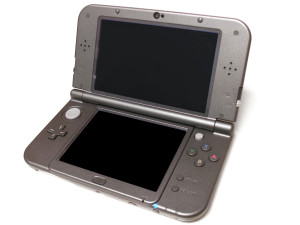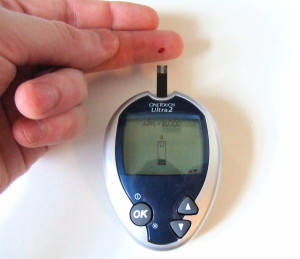Last century was the era of electronics, the twenty-first century is probably the era of photonics. In particular, the miniaturization of optical components will play an important role in the success of advanced photonic devices, based on optical waveguides. The term “Integrated Photonics” refers to the fabrication and integration of several photonic components on a common planar substrate. These components include beam splitters, gratings, couplers, polarizers, interferometers, sources and detectors, among others. In turn, these can then be used as building blocks to fabricate more complex planar devices which can perform a wide range of functions with applications in bio-photonics, optical communication systems, farming, instrumentation and sensors.
India being middle income country requires low cost products especially in lighting , medical diagnostic instruments, digital consumer goods and analytic instruments .Jampot Photonics is in the process of developing such products specifically targeted for this specific market.
BIOPHOTONICS
Medical Instrumentation: Photonics components have become key facilitator in the design and development of next-generation medical devices and diagnostics. The medical device industry is a rapidly growing area of opportunity for optics and photonics technology, with applications ranging from diagnostics to surgical tools to therapeutics.
 Photonic Lab-on-a-Chip: Photonic detection methods like Photonic Lab-on-a-Chip have advantages such as being non- invasive, easy to sterilize and highly sensitive even with short integration times and monitoring and quantification of biological and chemical processes.
Photonic Lab-on-a-Chip: Photonic detection methods like Photonic Lab-on-a-Chip have advantages such as being non- invasive, easy to sterilize and highly sensitive even with short integration times and monitoring and quantification of biological and chemical processes.
 Optical Biosensors: The progressive demand for the rapid and precise detection of any type of substances has speed up the development of a large variety of biosensors. For most of the applications, it is desirable to have a compact biosensor with high sensitivity, fast response, and able to perform real-time measurements.
Optical Biosensors: The progressive demand for the rapid and precise detection of any type of substances has speed up the development of a large variety of biosensors. For most of the applications, it is desirable to have a compact biosensor with high sensitivity, fast response, and able to perform real-time measurements.
OPTICAL COMMUNICATION
- Information Transport: Photonics components gives bandwidth 10 times more than electronic circuits, Data transmission of up to 30Gbps, Power dissipation is about 1000 times less in PICs than electronic circuits.
- Information Processing: Demand for more Speed, Bandwidth, circuit density and reduced power consumption and heat dissipation. Photonics is seen as the only technology solution that addresses the electronic interconnect barrier.
- Optical Storage: The maturation in the state-of-the-art of photonic integrated components is enabling increased applications for the technology. Most notable is the ever-expanding market for fiber optic data and communications links, familiar in both commercial and military markets.
SENSING
- Environment: Photonic technology will play an increasingly significant role in reducing our environmental impact. The Environmental monitoring will be done by highly efficient and reliable photonic sensors.
- Chemical Sensors: Photonic sensors for gas and chemical sensing will be good revolution in sensing industry.
- Transport and Aerospace: Photonic sensors have been developed and demonstrated that have small size, light weight, high resolution, immunity to electromagnetic interference, harsh environment operational capability, long-reach access potential and low cost implementation attributes. The inherent properties of optics and photonics, however, have suggested that components and processors may be designed that offer advantages over more commonly considered digital approaches for a variety of airborne sensor and signal processing applications.
PHOTONICS FARMING
 Measuring Crop Health: Crop health with overall production can also be monitored and measured by photonics technologies.
Measuring Crop Health: Crop health with overall production can also be monitored and measured by photonics technologies.
Safe Harvest: Photonics plays an important role in enhancing life on the planet by ensuring food, water and pharmaceuticals are all safe for consumption.
Farming with LEDs: To grow vegetables and fruits indoors using energy-conserving light sources. It makes possible to cultivate crops year round in famine-plagued desert regions.
Photonics Materials
Photonic materials play a critically important role in telecommunications, information processing and storage, chemical sensors, solar cells, light emitting diodes, magneto-optic memories, video systems, color imaging and other important applications.
![]() Silicon Photonics: For fabrication of passive components silicon and silicon dioxide are the most preferred materials as Electronic and photonic fabrication mechanism is similar.
Silicon Photonics: For fabrication of passive components silicon and silicon dioxide are the most preferred materials as Electronic and photonic fabrication mechanism is similar.
Indium Phosphide: For fabrication of Active components like laser, photodiode, and LED..etc III-V materials like Indium phosphide, Gallium Arsenide..etc are used.
Photonics Human Resource Development
To enhance the capability in growing quality research, innovation and highly trained human resource in photonics following activities needs to be exercised:
- Focus on basic and technical knowledge to undertake development activities in Photonic integrated circuit like component design, manufacturing and prototyping.
- Developing groups with research and development for advanced level research in Photonics and Photonic integrated circuit.
- Introducing Photonics as Course in curriculum for Master students
- Industry-Academics collaboration to fill technology gap.
- Develop Photonics Cluster to enhance research and development.
